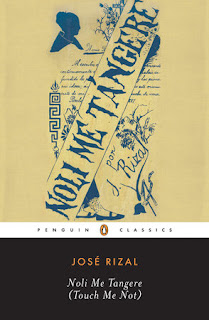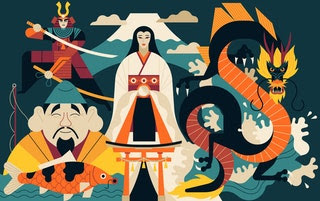NOLI ME TANGERE: Symbols, Major Characters, 5 W's
· Upper
Triangle- Represents Rizal’s past life and everything he saw and experience
during the Spanish colonization.
· Silhouette
of a Filipina- Believed to be Maria Clara or as the motherland who witnessed
and experienced the history of the country.
· Cross
or Crucifix- Symbolizes sufferings and death and represents the Catholic faith
as it rises above motherland and Filipinos. It represents dominance and it says
earlier sufferings because Filipinos suffered and being tortured during the
Spanish colonization.
· Laurel
Leaves- They represents faith, honor and fidelity, which are the values Rizal
aspires to be embodied by Filipinos. Laurel leaves are used as crowns during
Greek Olympics honoring the best.
· Burning
Torch- Pertains to the awakening of Filipino consciousness that with this
symbol may Filipino people will know what they are doing, that they may not
remain as slave forever.
· Sunflower-
-It symbolizes a new beginning that in every end of the rainbow there is always
a new start, new sunrise and a new day to start again and to stand tall. It is
also compared to the happiness of which appears to be always bowing down.
· Lower
Triangle-Represents Rizal’s current situation.
· Feet- It symbolizes the power of the friars wherein without friars, Filipinos
cannot stand on their own.
· Shoes-It
represents wealth and also the footprints left by friars in teaching
Catholicism, they also symbolize wealth because before Spanish are dominant
that if you don’t abide with their rules something bad will happen to you.
· Hairy
Legs- Symbolizes the wrong teachings of Spanish and the legend of the wolf
wherein the wolf shape shifts just how the friars hide their true nature, true
color and true character.
· Helmet
of a Guardia Civil- It represents the arrogance of those in authority, wherein
during the time of Spanish Guardia Civil are to be respected and all their
orders must be followed.
· Whip-
It represents the abuses and cruelties done by the Spaniards and friars. Before
Filipinos are treated like an animal wherein they are being pushed to do work
in their own country without being paid.
· Flogs
( Suplina)- It is used for self-flagellation and just like the whip, this also
symbolizes the cruelties of the Guardia
Civil.
· Chain-
Symbolizes slavery and imprisonment. Filipinos are imprisoned in their own
country, though they are staying in the country but everything they do is for
the good of friars.
· Rizal’s
Signature- It shows that Rizal experienced and witnessed the ills and abuses
that happened during his time.
· Bamboo
Stalks-It represents Filipino resiliency and despite the sufferings. Filipinos
can still stand tall and firm and are ready to face new challenges.
MAJOR CHARACTERS:
·
Juan Crisóstomo Ibarra y Magsalin - commonly referred to the novel as Ibarra or
Crisóstomo, is the protagonist in the story. Son of a Filipino businessman, Don
Rafael Ibarra, he studied in Europe for seven years.
·
María Clara de los Santos y Alba - commonly referred to as María Clara, is
Ibarra's fiancée. She was raised by Capitán Tiago, San Diego's cabeza de
barangay and is the most beautiful and widely celebrated girl in San Diego.
·
Don Santiago de los Santos - known by his nickname Tiago and political
title Capitán Tiago is a Filipino businessman and the cabeza de barangay or
head of barangay of the town of San Diego. He is also the known father of María
Clara.
·
Doña Victorina de los Reyes de Espadaña - commonly known as Doña Victorina, is an
ambitious Filipina who classifies herself as a Spanish and mimics Spanish
ladies by putting on heavy make-up. The novel narrates Doña Victorina's younger
days: she had lots of admirers, but she did not choose any of them because
nobody was a Spaniard. Later on, she met and married Don Tiburcio de Espadaña,
an official of the customs bureau who is about ten years her junior.
·
Dámaso Verdolagas - or Padre Dámaso is a Franciscan friar and
the former parish curate of San Diego. He is best known as a notorious
character who speaks with harsh words and has been a cruel priest during his
stay in the town. He is the real father of María Clara and an enemy of
Crisóstomo's father, Rafael Ibarra.
·
Pilosopo Tasyo -
is another major character in the story. Seeking for reforms from the
government, he expresses his ideals in paper written in a cryptographic
alphabet similar from hieroglyphs and Coptic figures hoping "that the
future generations may be able to decipher it" and realized the abuse and
oppression done by the conquerors.
·
Sisa -
is the deranged mother of Basilio and Crispín. Described as beautiful and
young, although she loves her children very much, she cannot protect them from
the beatings of her husband, Pedro.
·
Crispín -
is Sisa's 7-year-old son. An altar boy, he was unjustly accused of stealing
money from the church. After failing to force Crispín to return the money he
allegedly stole, Father Salví and the head sacristan killed him. It is not
directly stated that he was killed, but the dream of Basilio suggests that
Crispín died during his encounter with Padre Salvi and his minion.
·
Basilio -
is Sisa's 10-year-old son. An acolyte tasked to ring the church bells for the
Angelus, he faced the dread of losing his younger brother and the descent of
his mother into insanity. At the end of the novel, Elías wished Basilio to bury
him by burning in exchange of chest of gold located on his death ground.
5 W’S
What? Noli Me Tangere ( Touch Me Not)
When? Published in the year 1887 at the age of 26
Where? Berlin, Germany
Who? To Motherland
Why? To expose the inequities of the Spanish Catholic priests and
the ruling government



Comments
Post a Comment